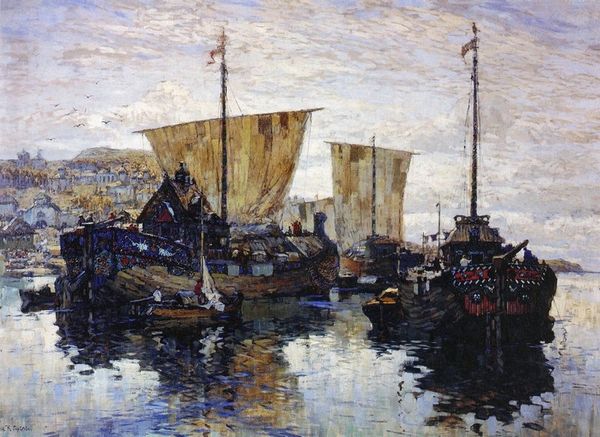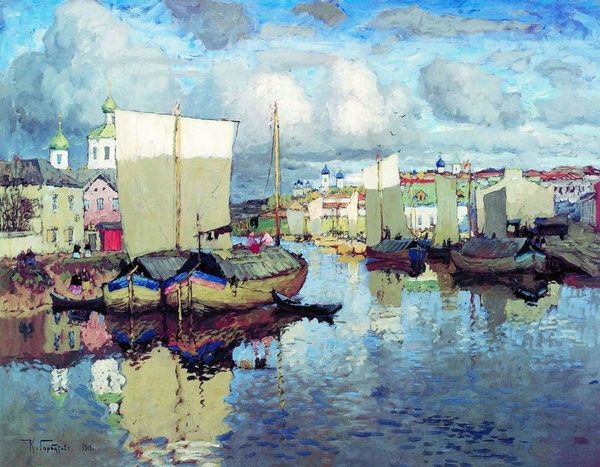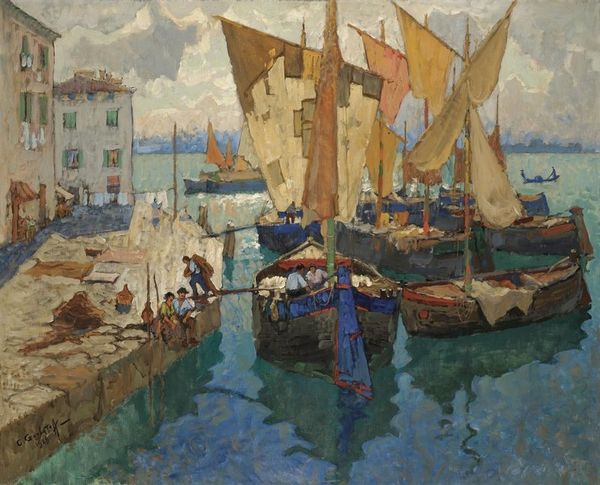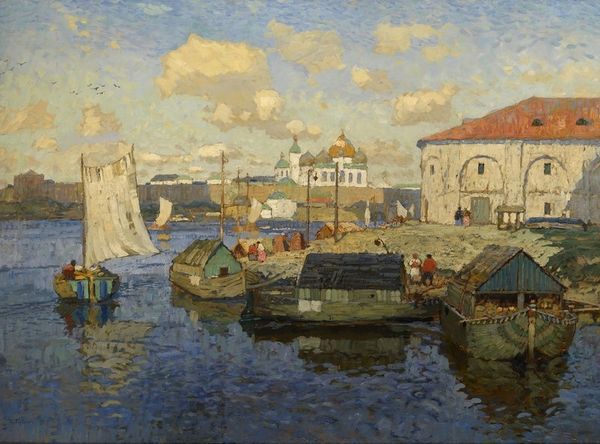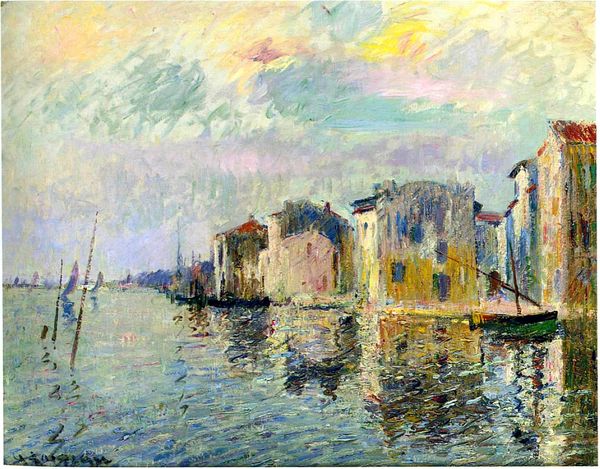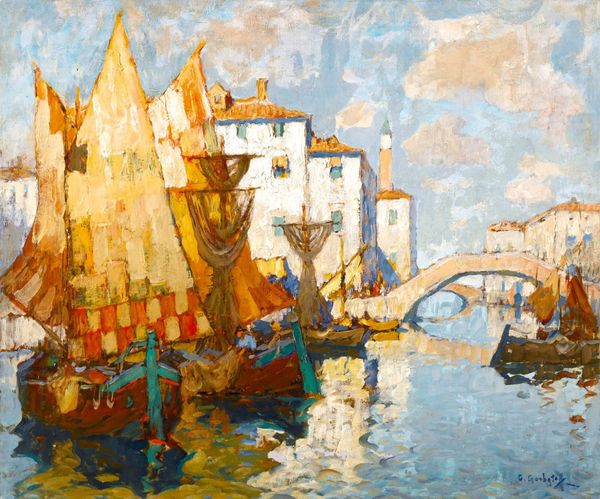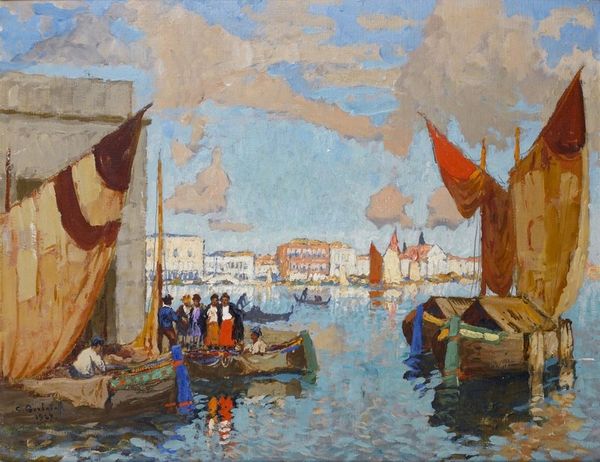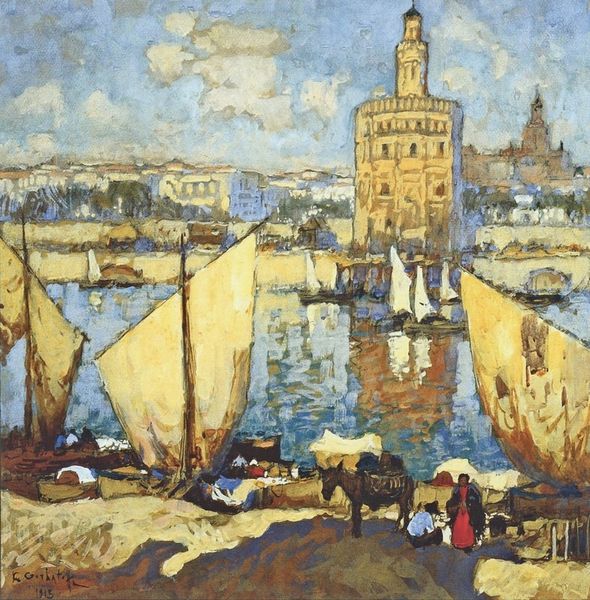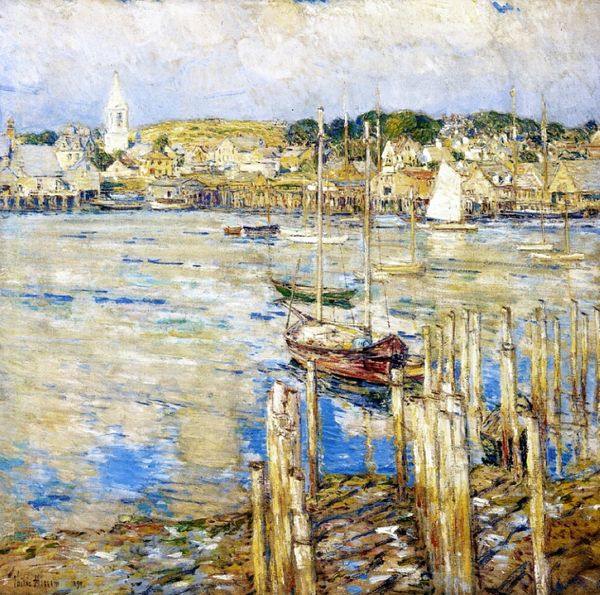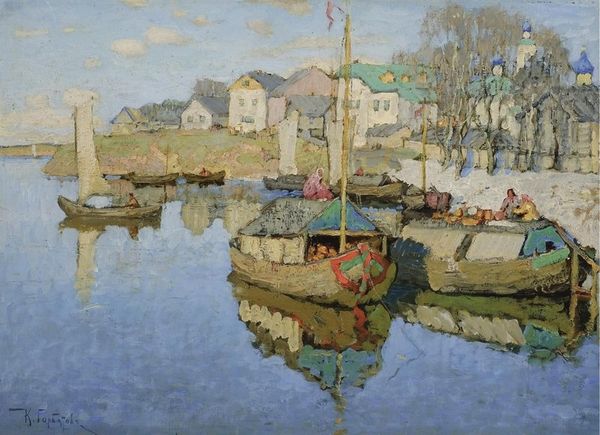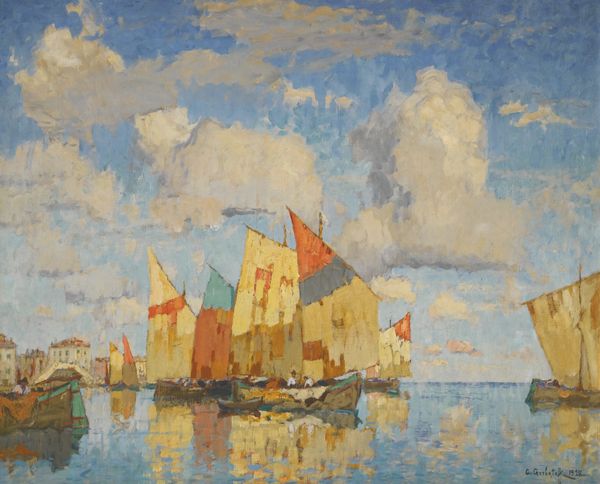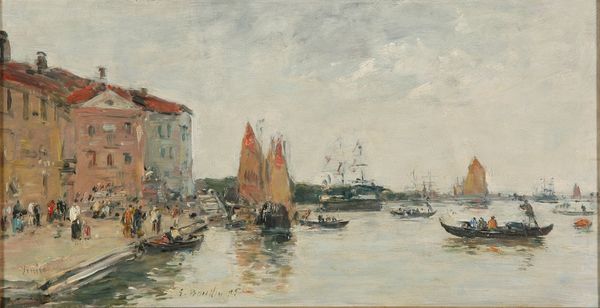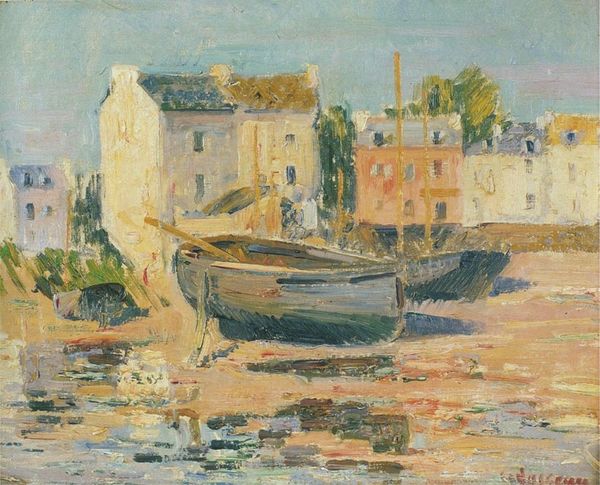
Copyright: Public domain
Editor: This is "Pskov," an oil painting by Konstantin Gorbatov, created in 1919. The scene feels so still and contemplative, almost like looking into a dream. The boats are lovely but I am intrigued by the juxtaposition of boats and buildings in a hazy light. What do you notice? Curator: I see a distinct focus on the materiality of labor in this piece. Gorbatov isn’t just depicting a scene, he’s highlighting the materials and the physical act of creating this cityscape. Consider the very visible brushstrokes; they reveal the labor-intensive process of applying oil paint to canvas. It is interesting to consider that this scene features labour that moves resources (via boats), is created using resources, and depicts structures also constructed from a clear labor effort. Editor: That's a perspective I hadn't considered. I was focused on the dreamy aesthetic. So, by focusing on the brushstrokes, are you pointing out how he’s drawing attention to the actual *making* of the art? Curator: Precisely! He draws attention to the physical nature of the boats and the city in the scene. And that directly involves human labor. The materiality becomes a comment on the Russian avant-garde at this time too and how labor was valued. Editor: It sounds like everything, the paint, the boats, even the city itself, becomes a kind of material evidence of human activity. Curator: Absolutely. The piece is less about aesthetic beauty and more about acknowledging the interconnectedness of materials, labor, and even the social environment of Pskov. What will you take away after our chat today? Editor: To think of the artmaking and boats as an act, too, not just as a final product. Thanks!
Comments
No comments
Be the first to comment and join the conversation on the ultimate creative platform.

